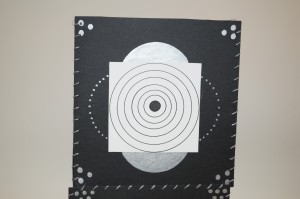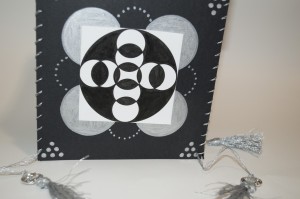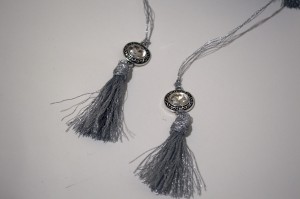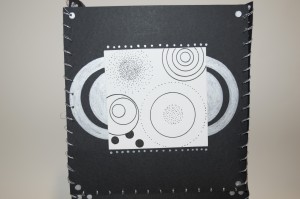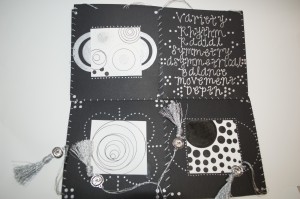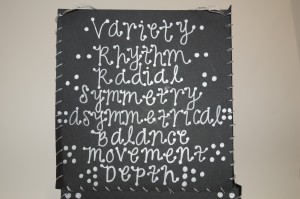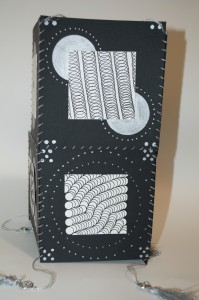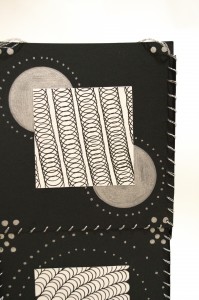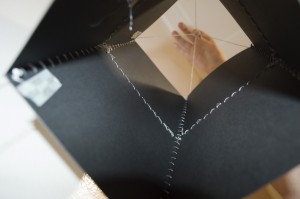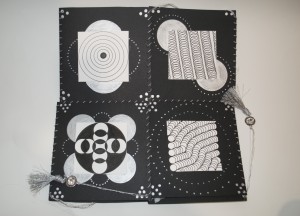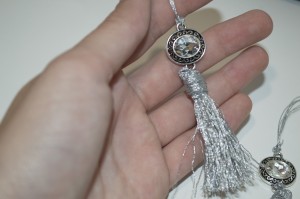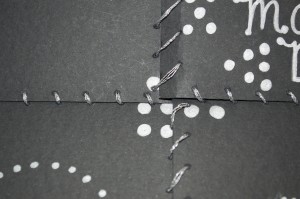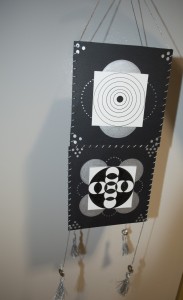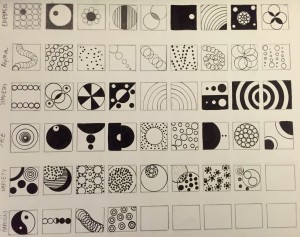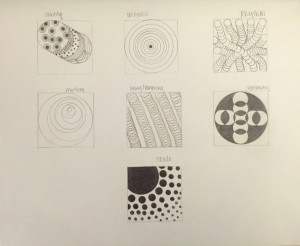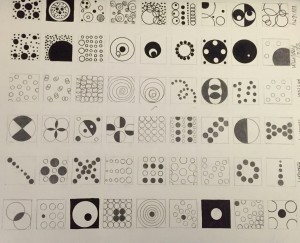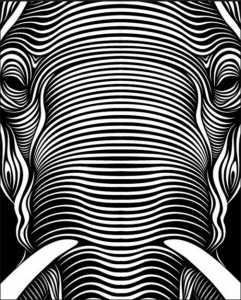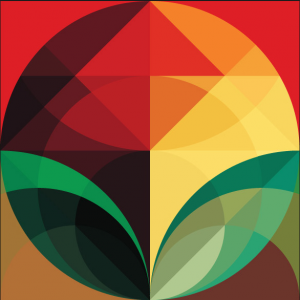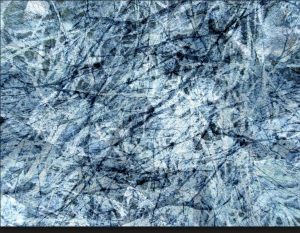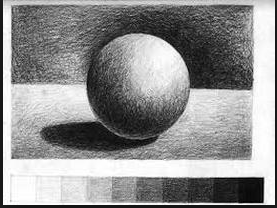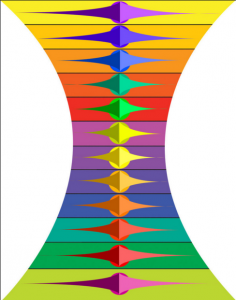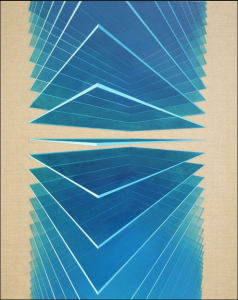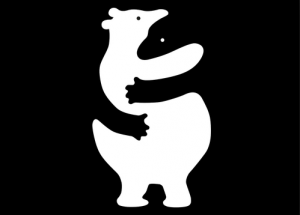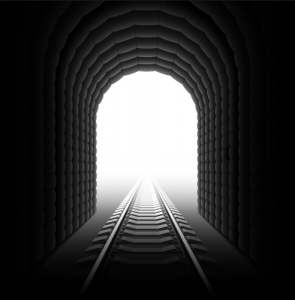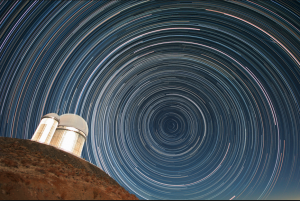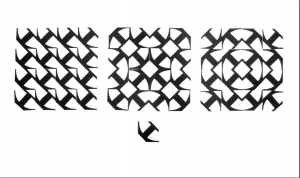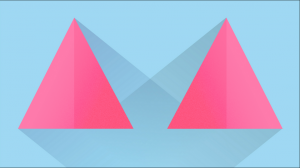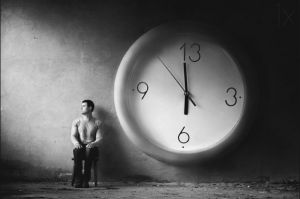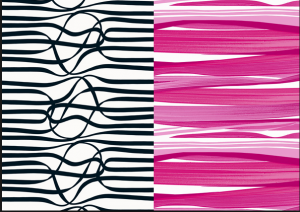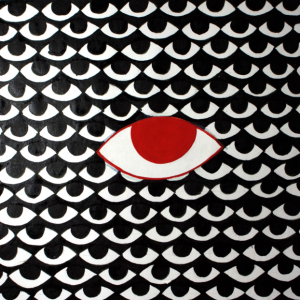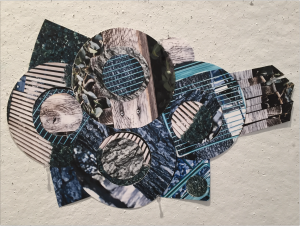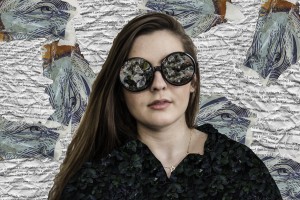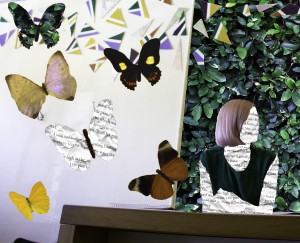Current and Projected Expert hours
Shelby Charette
GDES 2313
September 5, 2016
Current and Projected Expert hours
Throughout my life I’ve taken many art classes since I was little. In elementary school, art class and arts and crafts time was required and I would assume that took up about 30 minutes a day for 4 years including summer, since I loved to work on arts and crafts.
In middle school, I took drawing and art classes. Those took up about an hour a day for 3 years, including summer.
In high school, I took a general art class, a pottery class, and a graphic design class. Each was during a different year, and including the outside work I did drawing everyday, it took up about 2 hours a day for 3 years.
My first year in college, most of the courses were every other day, so I took a drawing course that was an hour and 50 minutes long, a Visual Studies course that lasted an hour and 50 minutes, and a Visual studies seminar class that was about an hour long. Outside of class, I would assume that weekly, I would work about 25-35 hours on my school projects and personal work.
I would assume I have a good start on my projected 10,000 hours. College is in for about 30 weeks, 15 each semester. I would guess that I have about 4,000-5,000 hours done for my 10,000 hour goal.
Circle Project Final Product
My final product ended up being a completely handmade paper lantern. I used black paper, my final drawings, a silver sharpie, and silver thread to create this. It was extremely labor intensive, but turned out exactly how I wanted it. I got the idea to make a lantern because of my love for decorations, and I have a handmade paper lantern at home in my room, and I really admired whoever made it because of the time that person put into it. I spent about 20 hours making it, because the stitching was tricky, but it was worth the time. Below are my first drafts for the circle project, when we had to draw the 54 different ways to draw a circle, and also the second draft, along with my final picks for my final product.
ARTS1311-02 Principles and Elements in Design
Shelby Charette
Yenesis Moreno
Alex Pesina
Elements
Lines: A mark that connects two points.
Shape: A figure that represents images.
Texture: A physical or implied pattern through repetition.
Value: Variation of dark to light in color.
Color: Hue and saturation within value.
Plane: A thicker dimension of a line.
Volume: Dimensions of an object.
Mass: The density of an object or figure.
Space: The area an object takes up and how it takes up the area around it.
Light: Source of brightness in a composition.
Time/Motion: Conveys movement.
Principles
Unity/Variety: sense of togetherness/difference.
Balance: When the elements of an image are properly distributed.
Scale/Proportion: Overall size of the project or elements.
Rhythm: How elements compliment each other.
Emphasis: When one element is more dominant than the others. What the artist wants you to see first/focus on.
ARTS1311-02 Personal Reflection
From the readings, I have developed the idea that designers are more focused on a main product. Designers have less freedom, because their work usually has to do with meeting client’s needs. A designer not only creates to try to please aesthetically, but also functionally. An artist has more free guidelines, and their work draws in the clients, who pay to see more of the work they admire from that artist. I believe I am both an artist and designer. I work with side projects for my friends, such as a music album art work, and I give them the chance to decide whether or not it is good the way it is, or if something needs to be changed. But also, on my free time, I make art because I enjoy doing it, and if someone likes it, they can expect that unless they are paying me for my art, that I will not change it for them.
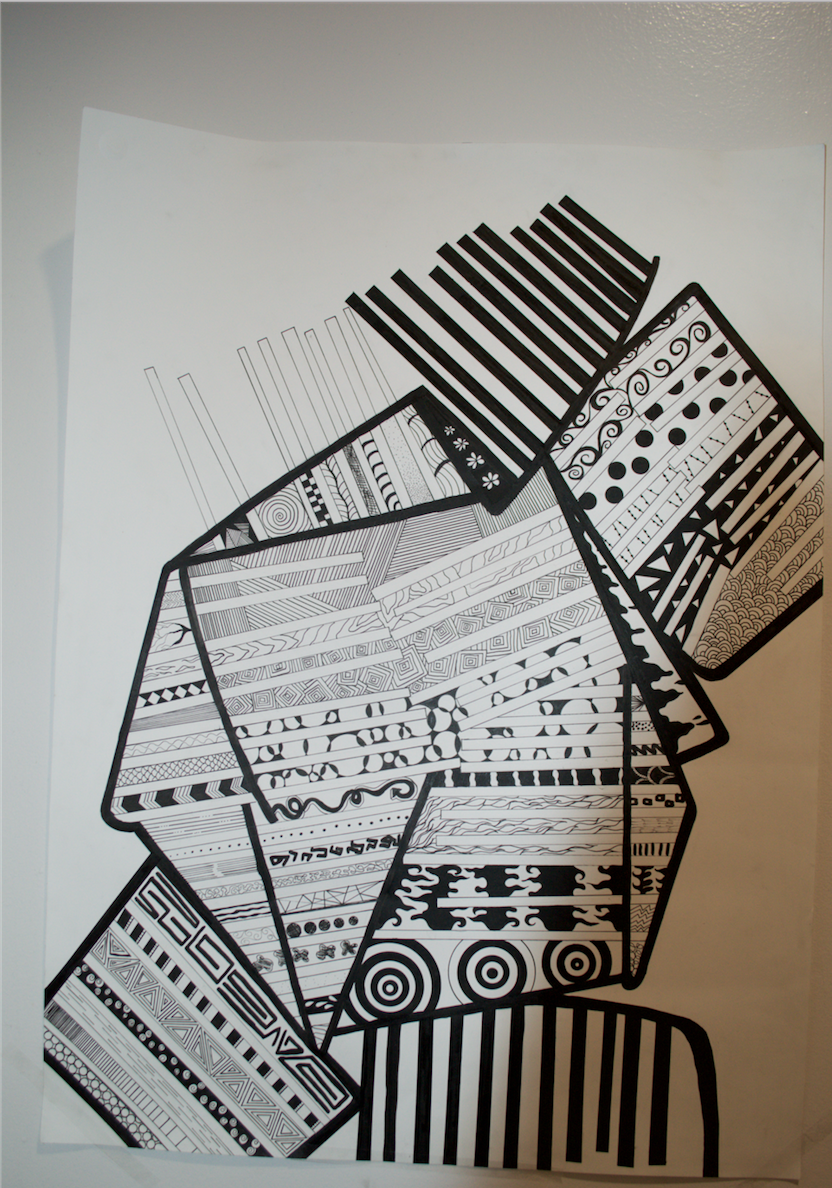
ARTS1311-02 Line Project
My Line Project started out with the 75 line drawings. I love to use lines, so this was very easy for me to do. In the first, I used mostly straight lines, and used what I was comfortable with, but in the second I started to experiment more. After, we had to draw a gesture drawing of an object. I chose to draw my sunglasses. Then, we had to do another gesture drawing, using 4 angels of an object while in class. I drew a chair outside of the Fine Arts building. I liked the chair drawing more, so I decided to use the chair drawings to influence my sculpture. I built my sculpture out of straws and hot glue. I then used my sculpture to cast shadows upon my poster board, and outlined the shadows. Then we used the 75 line drawings and combined them with our last step, and drew the different patterns and lines within the shadows from the sculpture. I was very happy with my final product. I believe it takes up the page nicely, and I liked contrasting the wavy lines with the straight lines. Overall, I think my final draft was very neat and interesting.
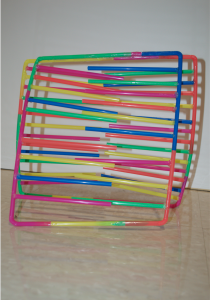
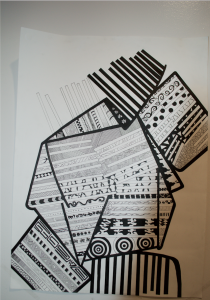

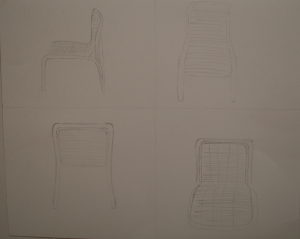
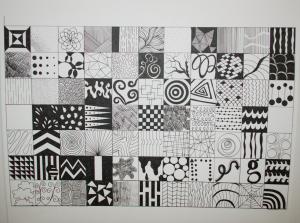

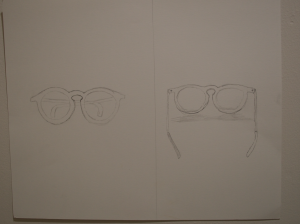
VISU1100-01 Blog Post #12
Shelby Charette
Part 1:
Kim Garza
Kim Garza is an Assistant Professor of Graphic Design. Kim works a lot with companies and app creating, but also does not limit herself to only making work for her job. For the past 6 years, she and her husband have been remaking a classic old film with new music and re-arranging the shots into very psychedelic phenomenal aesthetics. Kim shows that it’s very important to make time for your own projects.
Tammie Rubin
Tammie Rubin is a ceramics sculpter, although she takes on a whole new view of ceramics. She started taking waste, and things that were created for little to maybe one time use, and makes it into these sculptures that make them more important and vital than what their initial use was. She finds a way to create a connection between realism and imagination with her pieces.
James Shurin
James Shurin is a very interesting photographer, because his main focus is very unique. He finds beauty in “unintentional aesthetics,” which basically means he takes something mainly ordinary or over-looked, and finds a way to make it into something great. His photos are between both abstract and literal, but he does not confine himself to one focus.
Part 2:
I find this class a very interesting, because it has all three courses, combined into one. Although I am a graphic designer, I do find joy in learning about the other classes, and it makes me want to explore more than just working with graphics. It allows me to combine graphic design, photography, and art to make a work.
VISU1131-01 David Blaine Blog Post #9
Shelby Charette
November 17, 2015
David Blaine Ted Talk
The David Blaine Ted talk was extremely intriguing. He took something so vital to our health and survival and challenged his body in order to go with out it. He challenged the world records and ended up, after months upon months of trial and error, finally figured it out. Blaine did his fair share of research on the subject. He broke down the process into steps, and went from there. He took all things into account, and tried to mend them in a way that would prove successful without leading to brain injury. It turned out really successful because of how devoted he was to breaking this record, and pushing himself to win. Through his hard work, dedication, and research, David Blaine successfully held his breath for 17 minutes.
VISU1311-01 Blog Post #10: Radio Lab, Beyond Time
Shelby Charette
November 17, 2015
Radio Lab, Beyond Time
In the interviews, extremely thought provoking discussions are held. I find the concept of time very thought-provoking, because we all know it exists, but does it really? Time could be controlled, or manipulated and morphed, but we would never know. The theory of destiny is a harsh concept, because just like time, we don’t know for sure if it is real or not. We could go through our lives with every second, and every movement and choice be predetermined for us. Its a sad thing to realize, because as a human being, all we want is to make our own decisions, such as where to eat for lunch, who to marry, what kind of ice cream, should I go to the bathroom? It all could be put into our “destiny.” For all we know, even the choices we make are already what we would have chosen, so where did the idea of free-will come from? Time and destiny are two things that will never, in our lifetimes, be fully explored, because for all we know, none of this is real anyways.
VISU1131-01 Blog Post #12: The Way Things Go
Shelby Charette
November 17, 2015
The Way Things Go Reflection
The video was of a Rube Goldberg machine. These machines are created to be over-engineered which uses many levers and contraptions, in order to complete a simple task. Just by usually starting the machine at the beginning, you start a reaction and then let gravity and the machine do the rest of the work. These brilliantly engineered machines are usually so complex, yet the endings tend to be uneventful. The whole idea of the machine is to start from the beginning and build upon the machine until the very end. It is all just a process of working step by step. In the beginning of the video, it was not so exciting. It kick started, and the chain reaction was merely just simple techniques to move along. Although, I believe the middle towards the end of the video was the best part, because the inventor started including more extravagant transitions, and started using fire in the contraption. Unfortunately, the end was somewhat disappointing, only to dump a solution into another un-indentified solution in order to make dry ice (I suppose).
VISUAL STUDIES I Project 2: Reflection Shelby Charette
Personal Reflection
This project, along with the critique, showed me that I need to be more adventurous with my creations. I really enjoyed putting my work together, and I believe it came out really well. The pieces were very abstract, although it allowed the viewer to interpret it themselves, such as a spaceship for example (Joseph Vitone), or nature vs. and constructed uniformity, which I found very interesting. I strayed away from my usually very colorful works, and worked with more monochromatic, and darker colors. I find the critiques extremely helpful, because it allows us to see our own work in different ways, and helps us learn from mistakes, and further our success. This project allowed me to get out of my comfort zone of using primarily photoshop, and pushed me to explore the hand-made side of collage.
VISU1100-01 Blog Post 11
Shelby Charette
November 11, 2015
Part 1:
Tuan was the first to present, and looking at his work, it was very modern and new age; he used bold lines and vivid color in his work. His work was mainly for packaging and gifts, but the designs he made were spectacular in composition.
Hollis was the second to present. Her work used more linear and black lines, usually very dark drawings. Her work focuses around a main idea, which was natural disasters. It was interesting seeing Hollis’ thoughts and views of natural disasters.
Bill was the last to present, and he showed his transition from one idea to the next. His idea of taking pictures of water or extended periods of time was magnificent, and the photos came out really beatiful. I like how he went from such literal photographs, kind of like documentary photographs and went all the way through to this really abstract and unusual photography style where he took his photos apart and making them into something unique.
Part 2:
Year 1- I will begin working at a small design firm, to get my feet in the water. Also will be creating a lot of work on the side.
Year 2- I will be trying to climb up the ladder, I will keep learning about the tools, and software.
Year 3- I will become well acquainted with the business and how it is run, and I will have become very familiar and very good at vitalizing my tools and software.
Year 4- I will have had promotions, upgrade to more challenges and more of a work load.
Year 5- I will be comfortable with where I am in my career, although I will never stop trying to improve my abilities and keep trying to get better until I’m recognized and hopefully will keep working my way up the ladder to a more prestigious position.
Blog Post 9: Momento
Shelby Charette
November 8, 2015
When watching the movie Momento, one cannot help but feel confused. The movie is a very different way of looking at a murder story, if it can even fully be considered one. I believe the movie should be categorized as a crime, mystery, or drama mainly. The film being shot backwards made a very big difference on how we viewed the movie as a whole. I had never really seen a movie such as this one, but the more one watches the movie, the more the story builds, which I find interesting because usually movies tend to have more of the information or backstory in the beginning but the very last few scenes contained the most backstory.
The director used the film sequence to his advantage because throughout the entire film, not only was the character, Leonard, always finding new information and being confused, but also he made the audience feel the same way. It made me feel as if I could in fact be Leonard, or relate strongly to his confusion. The director used this movies unique format to create a connection between the audience and the main character.
VISU1100-01 Blog post #9
Below are three of my recent finished works. Two of them are created using photoshop, and one is made my hand. The one called “Lucidity,” and the other one called “Portrait, Milla,” are the two made on computer. I wanted to create a sort of dream-like state in “Lucidity,” in which I used all photographs of mine to create the effects and alter them to create a dream land for my subject, who was a cashier for a store I was in. The one called “Portrait, Milla,” I wanted to take and manipulate in order to make it outrageous, yet beautiful. The picture, when I took it, was simply a white background with my subject standing facing me, while I took the picture. I wanted to make something so simple into something extravagant using other photographs of mine along with found objects from South Congress that I scanned. The final one, “Associate,” was crafted by hand. I took 4 different photographs that I believed went together in a way, then I printed two copies of each, and cut various shapes from them, then I placed them on a scanner, and scanned the objects all together. Then I printed them on 17 in. by 22 in. paper and cut out the object.
VISU1100-01 Blog Post 9 Shelby Charette
Part 1-
Lynne Bowman Cravens
During Lynne’s presentation, we were able to see her growth from her work in the beginning to her work now and her artistic progress throughout the years. Her photographs started out being mostly photographs of the things around her, and began to morph into more abstract pieces, although the whole time her work had an underlying purpose and important message she was trying to convey. She showed the importance of experimentation and the process all artists undergo in order to develop into the mature artists they are.
Miranda Petrosky
Miranda’s presentation was extremely informative over design. She went through all types of design positions and their jobs, different types of designs, and the industries they fall into. She allowed graphic students to be able to see the diversity in the field and that we are not limited to one job.
Dustin Meyer
Dustin had a completely different career plan than what he ended up with. He talked about the process of changing majors, and the process of trial and error. Ultimately, he provided extremely helpful information for photography students.
Part 2-
http://www.internships.com/graphic-design/Graphic-Designer-I9989357
http://www.internships.com/graphic-design/Austin-Youth-Film-Festival-Graphic-Design-Internship
http://www.internships.com/graphic-design/Graphic-Design-Internship-St-Elmos-Fire
